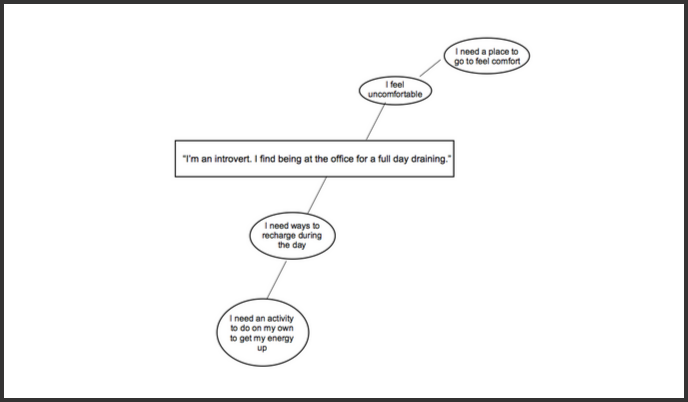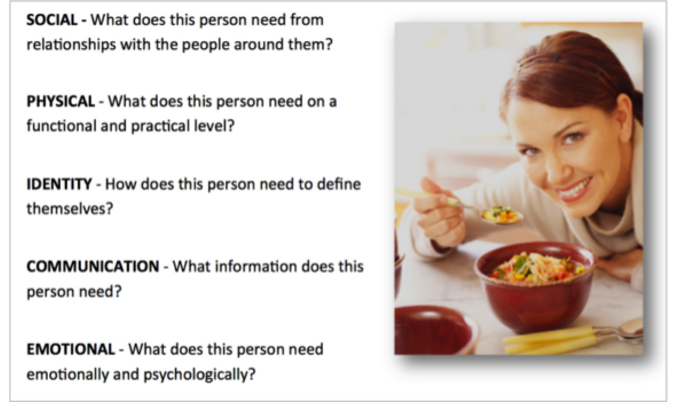Design Thinking, simply put, is a “human centered” methodology or approach to innovation. At its very core it is about developing empathy for the end user of a product or service so you understand them and designing a solution that will solve a problem.
Anyone can do Design Thinking. Here are some of the tools and techniques to help get you started.
Photo Elicitation
Select your target group. Ask customers to take photos of a subject area and tell stories about the subject both positive and negative aspects. Conduct a 1 on 1 interview to understand the customers story. Focus on listening to customers with empathy and an open mind.

User Journals
Select your target group. Ask customers to document their experience. Customers will record activities, thoughts and feelings. This can be done on paper or via recording or video. Conduct an interview to gain clarity on customer needs.

Motivational Mapping
In the center of a piece of paper, write down a comment or activity for which you believe there is a deeper meaning. Take any interesting insights or comments from the Photo Exercise or the Journal and dissect them for deeper meaning. Articulate the need by going one level deeper to consider what that unmet need and insight may point to.

Persona Creation
Leveraging the insights gained from the Photo Exercise and the Journal develop a persona for the target customer(s). Identify Social, Physical, Identity, Communication, and Emotional needs (SPICE). These are human needs and are not specifically tied to a particular category.

Experience Design
Knowing what you know about the customers SPICE profile, take one need from this framework and ideate on how you can provide a solution (product and/or service) for the customer. Build out the idea or service using the P.O.E.M’s framework. Consider People, Objects, Environments, Messages & Media and Services to capture all the components of the solution.

Co Creation
Prototype (physical prototypes or storyboards or experience maps) and map out the idea or service to bring it to life. Share the concept with the customer. Find out what’s working, what’s not and what could be better. Refine the idea based on the customers feedback.

Design Elements & Capabilities
Identify key components of the experience that need to be built. Identify capabilities that are required to deliver each component. Brainstorm options that could help build capabilities. Consider both internal and external options.

Anyone can use Design Thinking. By using these tools and techniques you will be a Design Thinking Pro in no time.
If you are interested in Design Thinking but need support contact John Chan at Johnchan@pearl-strategy.ca
Source: Design Works, Heather M.A. Fraser




